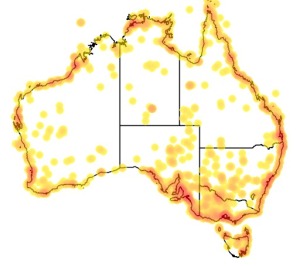Colours
Distinguishing features
These birds are small waders. They have a long down-curved bill, long neck and legs and a white rump. The breeding adult has patterned dark grey upperparts and brick-red underparts. In winter, this bird is pale grey above and white below, and shows an obvious white supercilium. Juveniles have a grey and brown back, a white belly and a peach-coloured breast. (Wikipedia)
Size
- Up to 23 cm (Length of specimen)
Wingspan
- From 38 cm to 41 cm
Synonyms
Distribution
Distribution and habitat preferences
Of all shorebird species, it has the smallest breeding range in relation to its non-breeding range. After breeding these birds migrate south to Africa, Australasia or India. South Africa is at the southern limit of the migration path from Siberia, 15 000 km or 130 degrees of latitude away. (Wikipedia)
Diet
It forages in soft mud on marshes and the coast, mainly picking up food by sight. It mostly eats insects and other small invertebrates. (Wikipedia)
Web resources
References
- Simpson, K., N. Day and P. Trusler (2004). Field Guide to Birds of Australia: 7th Edition Penguin Group (Australia), Camberwell, Victoria.


